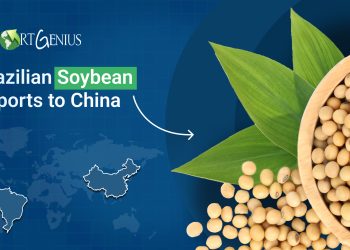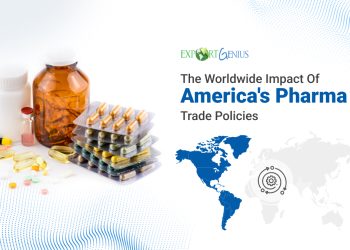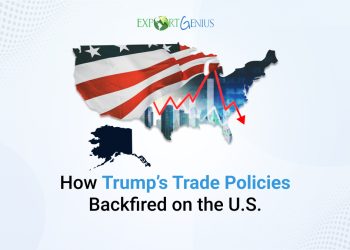Key Highlights
- The Global Alliance for Trade Facilitation is reshaping trade reform in developing and least-developed countries by simplifying trade across international borders.
- As of January 2025, the Alliance has engaged 47 international business partners and more than 1,000 local Micro, Small, and Medium Enterprises (MSME) in its activities.
- The Alliance has successfully delivered 25 projects addressing global challenges such as disaster, public health, and food security resilience.
Global trade has surged since 1995 when the World Trade Organization (WTO) was created. Between that year and 2022, low- and middle-income economies grew their share of global exports from 17% to 32%. Today, international trade is likely to boost further thanks to the Global Alliance for Trade Facilitation. The world must remove obstacles to trade and streamline supply chains, mainly by supporting countries as they implement the WTO’s Trade Facilitation Agreement (TFA) – which simplifies export and import processes by cutting red tape.
By the end of 2024, Alliance initiatives had already saved over $140 million in over 20 project countries. This project works for micro, small, and medium enterprises (MSMEs) in countries of Africa, Asia, and South America.
Filling global trade gaps
Despite the broader progress made to date, significant disparities remain between developed and developing countries regarding advancing TFA implementation. While WTO members are on track to fulfill 90% of their TFA commitments by 2030, many least-developed and landlocked countries lag behind. There must be urgent action to bridge these gaps.
In certain poorer countries, outdated and cumbersome border processes continue to inflate business costs – stifling MSME growth and negatively affecting national economies. These inefficiencies hinder the seamless movement of essential commodities like medicine, food, and aid supplied across borders – exacerbating humanitarian challenges.
Developing countries in Asia, Africa, and South America
To date, the Alliance has successfully delivered 25 projects that support developing and least-developed countries – including Bangladesh, Guatemala, Malawi, Nigeria, and Togo. These countries have implemented TFA measures and broader reforms that further the UN Sustainable Development Goals. An additional 17 projects are currently underway. Let’s figure out which are developing and least-developed countries.
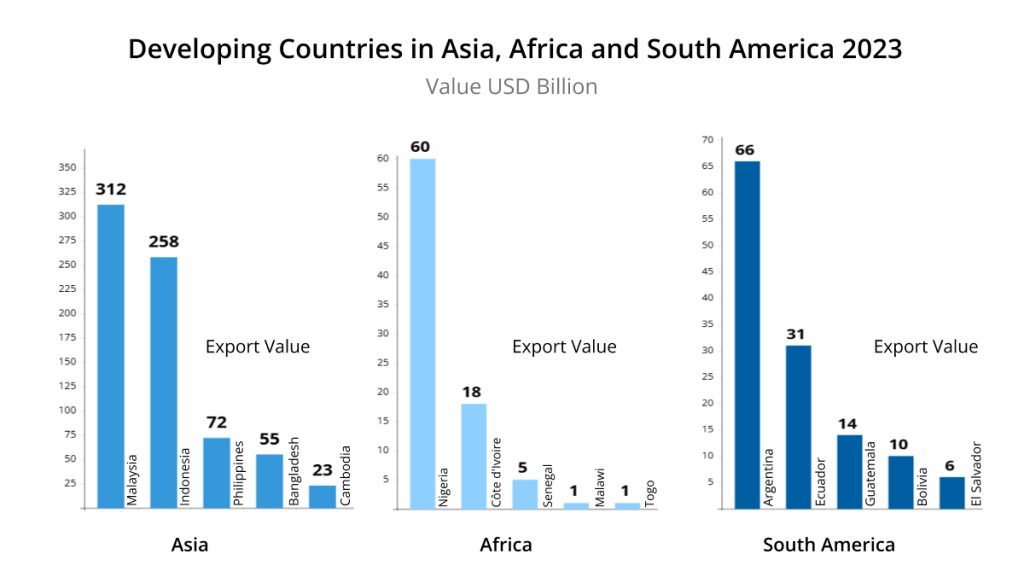
| Asia | Africa | South America | |||
| Country | Export Value | Country | Export Value | Country | Export Value |
| Malaysia | 312 | Nigeria | 60 | Argentina | 66 |
| Indonesia | 258 | Côte d’Ivoire | 18 | Ecuador | 31 |
| Philippines | 72 | Senegal | 5 | Guatemala | 14 |
| Bangladesh | 55 | Malawi | 1 | Bolivia | 10 |
| Cambodia | 23 | Togo | 1 | El Salvador | 6 |
Least-developed countries Asia, and Africa
The least-developed countries in Asia are Myanmar, Laos, Afghanistan, Nepal, and Yemen and in Africa are Burkina Faso, Benin, Burundi, Liberia, and Central African Republic. Check their export values reported in 2023.
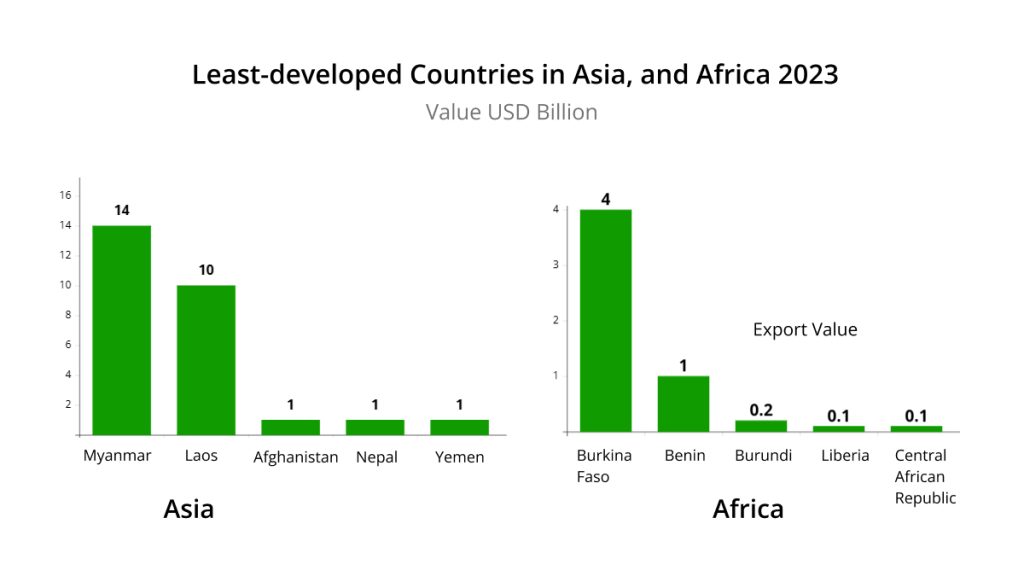
| Asia | Africa | ||
| Country | Export Value | Country | Export Value |
| Myanmar | 14 | Burkina Faso | 4 |
| Laos | 10 | Benin | 1 |
| Afghanistan | 1 | Burundi | 0.2 |
| Nepal | 1 | Liberia | 0.1 |
| Yemen | 1 | Central African Republic | 0.1 |
By streamlining cross-border processes, this alliance will help essential goods reach vulnerable populations more quickly, while fostering economic growth and empowering MSMEs and women-led enterprises.
In Guatemala, the Alliance supported the modernization and digitalization of the National Single Window, generating $4 million in annual savings. In Malawi, upskilling customs clearing agents through training and examination has professionalized an entire industry, decreasing processing times by 16% and ultimately streamlining cross-border trade.
The Global Alliance for Trade is crucial for both developing and under-developed in Asia, Africa, and South America to enhance flow of commodities and economic growth. For detailed data of countries, access Export Genius dashboard, world’s best platform for global import export trade data.






